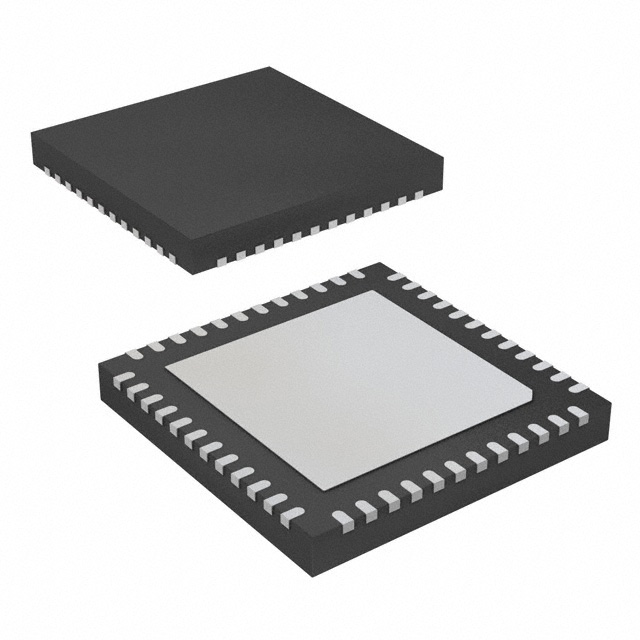Viz Specifikace pro podrobnosti o produktu.

AT89C5131A-PLTIL
Product Overview
Category
AT89C5131A-PLTIL belongs to the category of microcontrollers.
Use
This microcontroller is commonly used in various electronic applications that require embedded control and processing capabilities.
Characteristics
- High-performance 8-bit microcontroller
- Low-power consumption
- Integrated flash memory for program storage
- Multiple I/O ports for interfacing with external devices
- On-chip peripherals for enhanced functionality
Package
AT89C5131A-PLTIL is available in a compact and durable package, suitable for surface mount technology (SMT) applications.
Essence
The essence of this microcontroller lies in its ability to provide efficient and reliable control and processing capabilities in a wide range of electronic systems.
Packaging/Quantity
AT89C5131A-PLTIL is typically packaged in reels or trays, containing a specific quantity of microcontrollers per package. The exact quantity may vary depending on the manufacturer's specifications.
Specifications
- Architecture: 8-bit
- CPU Speed: Up to 24 MHz
- Program Memory Size: 32 KB
- RAM Size: 2 KB
- Number of I/O Pins: 32
- Operating Voltage Range: 2.7V to 5.5V
- Communication Interfaces: UART, SPI, I2C
- ADC Channels: 8-bit, 8 channels
- Timers/Counters: 3 x 16-bit
- Operating Temperature Range: -40°C to +85°C
Detailed Pin Configuration
The AT89C5131A-PLTIL microcontroller has a total of 32 pins, each serving a specific purpose. Here is a detailed pin configuration:
- P0.0 - Port 0, Pin 0
- P0.1 - Port 0, Pin 1
- P0.2 - Port 0, Pin 2
- P0.3 - Port 0, Pin 3
- P0.4 - Port 0, Pin 4
- P0.5 - Port 0, Pin 5
- P0.6 - Port 0, Pin 6
- P0.7 - Port 0, Pin 7
- P1.0 - Port 1, Pin 0
- P1.1 - Port 1, Pin 1
- P1.2 - Port 1, Pin 2
- P1.3 - Port 1, Pin 3
- P1.4 - Port 1, Pin 4
- P1.5 - Port 1, Pin 5
- P1.6 - Port 1, Pin 6
- P1.7 - Port 1, Pin 7
- P2.0 - Port 2, Pin 0
- P2.1 - Port 2, Pin 1
- P2.2 - Port 2, Pin 2
- P2.3 - Port 2, Pin 3
- P2.4 - Port 2, Pin 4
- P2.5 - Port 2, Pin 5
- P2.6 - Port 2, Pin 6
- P2.7 - Port 2, Pin 7
- P3.0 - Port 3, Pin 0
- P3.1 - Port 3, Pin 1
- P3.2 - Port 3, Pin 2
- P3.3 - Port 3, Pin 3
- P3.4 - Port 3, Pin 4
- P3.5 - Port 3, Pin 5
- P3.6 - Port 3, Pin 6
- P3.7 - Port 3, Pin 7
Functional Features
- High-speed processing capabilities
- Flexible I/O configuration for interfacing with external devices
- On-chip peripherals such as UART, SPI, and I2C for communication
- Built-in timers/counters for precise timing operations
- Integrated ADC channels for analog signal acquisition
- Low-power consumption modes for energy efficiency
- Robust protection features to ensure reliable operation
Advantages and Disadvantages
Advantages
- High-performance microcontroller suitable for a wide range of applications
- Low-power consumption for energy-efficient designs
- Integrated flash memory eliminates the need for external storage
- Multiple I/O pins provide flexibility in interfacing with external devices
- On-chip peripherals simplify system design and reduce component count
Disadv
Seznam 10 běžných otázek a odpovědí souvisejících s aplikací AT89C5131A-PLTIL v technických řešeních
Sure! Here are 10 common questions and answers related to the application of AT89C5131A-PLTIL in technical solutions:
Q1: What is AT89C5131A-PLTIL? A1: AT89C5131A-PLTIL is a microcontroller from Atmel (now Microchip Technology) that is widely used in various technical solutions.
Q2: What are the key features of AT89C5131A-PLTIL? A2: Some key features of AT89C5131A-PLTIL include an 8051-compatible CPU, 32KB Flash memory, 2KB RAM, USB 2.0 full-speed interface, multiple timers/counters, and UART.
Q3: What are the typical applications of AT89C5131A-PLTIL? A3: AT89C5131A-PLTIL is commonly used in applications such as USB-based data acquisition systems, industrial control systems, home automation, and embedded systems.
Q4: How can I program AT89C5131A-PLTIL? A4: AT89C5131A-PLTIL can be programmed using various development tools like an In-Circuit Emulator (ICE), an In-System Programmer (ISP), or a compatible programmer/debugger.
Q5: Can I use C language for programming AT89C5131A-PLTIL? A5: Yes, you can use C language for programming AT89C5131A-PLTIL. There are several compilers available that support the 8051 architecture.
Q6: Does AT89C5131A-PLTIL have built-in USB functionality? A6: Yes, AT89C5131A-PLTIL has a built-in USB 2.0 full-speed interface, which makes it suitable for USB-based applications.
Q7: Can I interface AT89C5131A-PLTIL with other peripherals? A7: Yes, AT89C5131A-PLTIL has multiple I/O pins that can be used to interface with various peripherals such as sensors, displays, and actuators.
Q8: What is the operating voltage range of AT89C5131A-PLTIL? A8: The operating voltage range of AT89C5131A-PLTIL is typically 2.7V to 5.5V.
Q9: Is AT89C5131A-PLTIL suitable for low-power applications? A9: Yes, AT89C5131A-PLTIL has power-saving features like idle mode and power-down mode, making it suitable for low-power applications.
Q10: Are there any development boards available for AT89C5131A-PLTIL? A10: Yes, there are development boards specifically designed for AT89C5131A-PLTIL, which provide easy prototyping and testing capabilities.
Please note that these answers are general and may vary depending on specific requirements and implementations.

